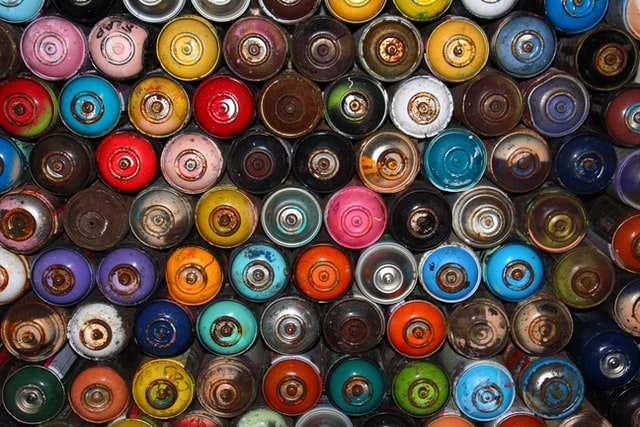Grafitti is one of the most popular forms of urban art that has been embraced across several continents in the whole world. However, many wonder about its exact origin and who exactly came up with this bizarre kind of art that’s so loved today. Grafitti dates far back as the early men, whose caves were filled with such drawings. Much of this art has also been found in ancient Roman and Greek history. Since then, there have been countless sightings all throughout history till date.

Where Does the Word “Graffiti” Actually Come From?
Many individuals today associate graffiti with modern trends, an assumption that couldn’t be more wrong. The origin of the word "graffiti" has its basis in ancient civilization and was derived from the Greek word "Graffein". Graffein means to write, scratch or draw, and it’s a name that was in existence long before the arrival of Corn Bread in Philadelphia, a term that is associated with modern graffiti. Graffiti itself was formed from the Italian word "graffiti" which means scratched.
According to historical studies, the term was first coined in 1851 when inscriptions were found scratched into the walls of the now lost city of Pompeii. The name Grafitti has a modern feel to it, but certainly comes from a very ancient time.
Scratches in the Stone: The Earliest Forms of Graffiti
Graffiti existed prior to written language itself, with the first drawings appearing on cave walls thousands of years ago. On discovery, this cave was named The Cave of Hands and is located in Santa Cruz, Argentina. It remains one of the most fascinating ancient graffiti to date.
On the contrary, the first modern style of graffiti was located in the ancient Greek city of Ephesus. This is known as Turkey today. The drawing includes an image of a hand, a foot, and a heart, and many local guides believe it to be an advertisement for prostitution.
Ancient Romans also are not left out, as there are records of some graffiti carvings on their walls and monuments. One of the earliest and most common graffiti is the Alexamenos graffiti, found on the wall of a room near Rome. It is one of the earliest known images of Jesus Christ and was created around 200 AD. It features Jesus Christ with the head of a Donkey and the body of a man, and was created to mock and insult Christians.
Another prominent early form of graffiti was found in Hagia Sophia. It features scratches and engravings created by Viking mercenaries that read, "Halvdan was here.” This ancient style isn’t seen today, as most graffiti artists now make use of spray cans. In the early days leading to this popular writer (a name for graffiti artists), TAKI 183 elevated things by covering several parts across New York with his designs. Doing this was especially easy because TAKI 183 worked as a messenger who traveled all around the city.
He created his unique signature by using a marker on every art he did across substations, an act that eventually made him popular all across the city. From there on, new writers started using unique markers and spray cans of paint, creating amazing art in a bid to stay unique and more stylish than anyone else.
Graffiti As We Know It: How Did We Get Modern Graffiti?
Modern graffiti as we know it today dates back to the 1960s and is believed to have risen from Black and Latino neighborhoods in New York City. The trend sprung into life and great prominence alongside hip-hop music and street cultures. This rise was also accompanied and catalyzed by the invention of aerosol spray cans.
However, the exact location of the first graffiti artists or taggers or tags remains difficult to pinpoint. Some believe it to be in New York (making reference to Julio 204 and Taki 183 taggers in the Washington Heights). On the other hand, others point to Philadelphia with popular tagger Corn Bread.
New York remains the city where graffiti grew and blossomed, as early taggers painted on subway vehicles that traveled far distances. Over time, subways became the area with the highest concentration of graffiti.
Graffiti Today: Where Is Graffiti Now & Where Will It Go from Here?
Although arguably still prominent in the US, Graffiti today is being embraced across several countries. Contemporary graffiti has transformed since its early days, going beyond the traditional art forms many used to know it as. Modern graffiti grew as an individualistic form rather than a stem from the old foundation. It became more or less a text base urban communication system that created its own networks.
As things stand, the art keeps spreading, and today countries like Taiwan have places designated as "graffiti zones,” where artists are free to paint and design on the wall. In São Paulo, Brazil, the city council specially created exceptions for some graffiti artists to paint on the city subway trains. This goes to show how well the culture is being accepted across the world and should things persist in the direction they’re going, we could as well see it become a mainstream accepted art.